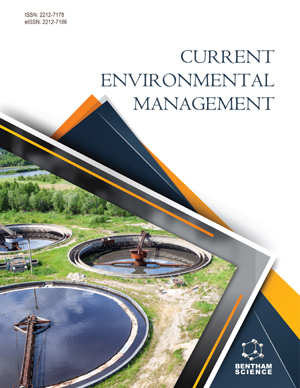Abstract
Background: The São Paulo State area has been facing a water crisis that caused water shortage in many cities, and a series of socioeconomic problems as an outcome. Water supply massive land-use alteration throughout São Paulo State river basins, coupled with climate change effects might produce severe damage to the region if preventive actions are not enforced in time.
Objective: This study aims to apply an adapted methodology of fragility analysis to a tributary of the Itupararanga reservoir (Brazil) using a hydrological modeling tool. Based on the determination of the flow and drainage system direction and object-based image analysis, a final map of the fragility will be constructed. Methods: This paper presents a fragility assessment methodology on a local scale using a rural watershed of the study area. This approach uses object-based classification of topography data from Shuttle Radar Topography Mission to extract the most fragile territorial units of the watershed area, in terms of pollution and siltation contribution risk, combined with land cover classification. Results: The study area exhibits very high and medium fragility areas related to water contamination and siltation risk that can be seen as priority areas for land cover management and monitoring, although most of the basin area was classified as very low fragility. Conclusion: The methodology applications have great potential uses in territorial planning, protected areas and restoration priorities delimitation, ecological-economic zoning, hazard evaluation and mitigation, erosional processes and water protection and management at both local and regional scale studies.Keywords: Environmental fragility, land cover, physiographic segmentation, SRTM, swater, crisis.
Graphical Abstract
[http://dx.doi.org/10.1007/s12665-017-6778-3]
[http://dx.doi.org/10.1016/j.scitotenv.2018.04.216] [PMID: 29710580]
[http://dx.doi.org/10.1590/0001-3765201720160915] [PMID: 28793008]
[http://dx.doi.org/10.1007/s12524-018-0759-1]
[http://dx.doi.org/10.3390/su11020490]
[http://dx.doi.org/10.7154/RDG.1994.0008.0006]
[http://dx.doi.org/10.1007/s12665-012-1979-2]
[http://dx.doi.org/10.1016/j.scitotenv.2010.02.002] [PMID: 20206965]
[http://dx.doi.org/10.1016/j.apgeog.2011.05.004]
[http://dx.doi.org/10.1111/j.1654-1103.2009.01069.x]
[http://dx.doi.org/10.1080/1747423X.2010.537790]
[http://dx.doi.org/10.1016/j.yqres.2010.05.001]
[http://dx.doi.org/10.1080/00359191003652033]
[http://dx.doi.org/10.1016/j.geomorph.2011.12.001] [PMID: 22485060]
[http://dx.doi.org/10.1134/S1064229312040047]
[http://dx.doi.org/10.1201/b10599-13]
[http://dx.doi.org/10.1016/0034-4257(91)90048-B]
[http://dx.doi.org/10.1016/S0034-4257(01)00295-4]
[http://dx.doi.org/10.1146/annurev.energy.28.050302.105459]
[http://dx.doi.org/10.20396/lobore.v9i4.8642497]
[http://dx.doi.org/10.1016/j.envint.2006.05.002] [PMID: 16781774]
 3
3


